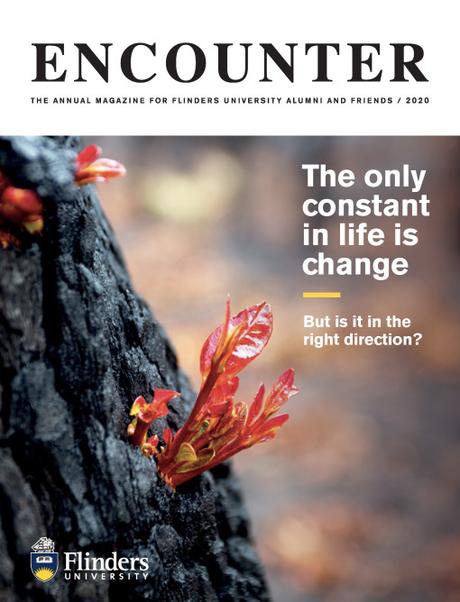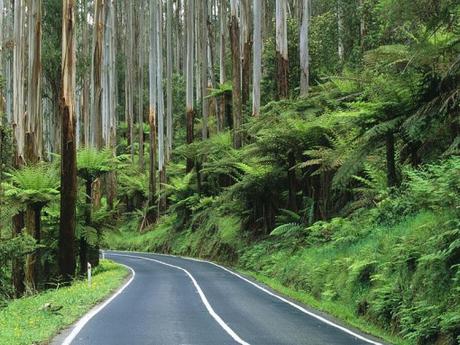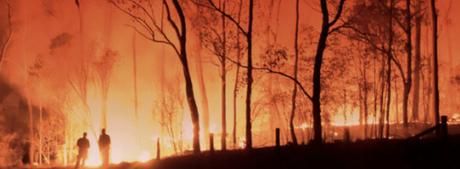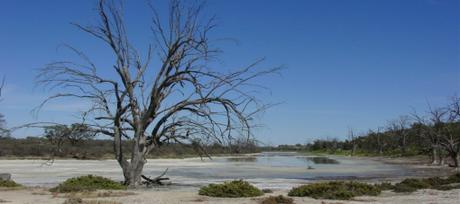I just wrote a piece for the Flinders University alumnus magazine — Encounter — and I thought I’d share it here.

As an ecologist concerned with how life changes and adapts to the vagaries of climate and pervasive biological shuffling, ‘constant change’ is more than just a mantra — it is, in fact, the mathematical foundation of our entire discipline.
But if change is inevitable, how can we ensure it is in the right direction?
Take climate change for example. Since the Earth first formed it has experienced abrupt climate shifts many times, both to the detriment of most species in existence at any given time, and to the advantage of those species evolving from the ashes.
For more than 3.5 billion years, species have evolved and gone extinct, such that more than 99% of all species that have ever existed are now confined, permanently, to the vaults of the past.
While extinctions occur all the time, the rates are not constant. We can now say with reasonable certainty that current global extinction rates equal or even exceed those that occurred during the previous five mass extinction events.
Don’t believe me? Here are some salient observations that might convince you otherwise.
The biomass of vegetation on land across the globe has halved over human history, with a corresponding loss of more than 20% of its original biodiversity.
This means that more than 70% of the Earth’s land surface has been altered by humans.
This has resulted in over 700 vertebrate and nearly 600 plant extinctions recorded since the 16th century, and many more species have likely gone extinct unnoticed. More worryingly, massive population declines that are the precursors to extinction have also occurred worldwide — since 1970, more than 60% of all land-based vertebrate individuals have disappeared.

This means that the total global biomass of wild animals today is less than one quarter of what it was when human civilisation began.
One scary statistic is that of the estimated 0.17 gigatonnes of biomass of land-based vertebrate species on Earth today, only 5% is represented by wild mammals, birds, reptiles and amphibians – the rest is made up of livestock (59%) and living human beings (36%).
Australia is unfortunately not immune to these global trends, with at least 100 vertebrate extinctions recorded here since Europeans first arrived, giving us the ignominious title of the world’s leading nation in mammal extinctions.
While these extinctions have been primarily the result of introduced predators like cats and foxes, we have also irreparably damaged Australia’s forests.
Since colonisation, we have been responsible for the loss of nearly 40% of the continent’s forests, and much of the remainder is too fragmented to provide sufficient shelter to many forest-dependent species.

Worse still is the rising frequency and severity of bushfires in an already (sun)burnt country.
Global warming is changing Australia’s bushfire susceptibility, driving longer burning seasons, and fewer opportunities for controlled burning during cooler, wetter periods.
The catastrophic bushfires that recently ravaged Australia are still an open wound, with many threatened species pushed even closer to extinction.
The sad reality is that the incidence and severity of these events will increase even more for the foreseeable future.
Our poor water management (Australians use water at six times the global average rate per capita despite living in the world’s driest inhabited continent), lack of a meaningful pathway to emissions reductions, and broken legislation for the protection of our remaining ecosystems, mean that our extinction crisis has only just begun.
What can we do?
We can demand a more responsible government and tougher legislation to protect our native plants and animals.

We can insist on development that does not require additional deforestation, and we can restore great tracks of previously stripped land.
We can implement a broad network of clean-energy technologies to transition our emissions-heavy economy toward one with a low footprint, and we can invest in smarter, low-water agriculture.
On a community level, during pandemic restrictions we have been forced to re-think how and where we work, how our food is grown and distributed, and how cities can support this transition – all aspects that can reduce the impact of climate change.
Yes, change is inevitable, and climates have always changed, but it is indisputable that human society is now responsible for one of the greatest climate changes Earth has experienced for millions of years.
For too long we have ignored the pleas of scientists to mend our ways.
We ignore these warnings at our peril.

